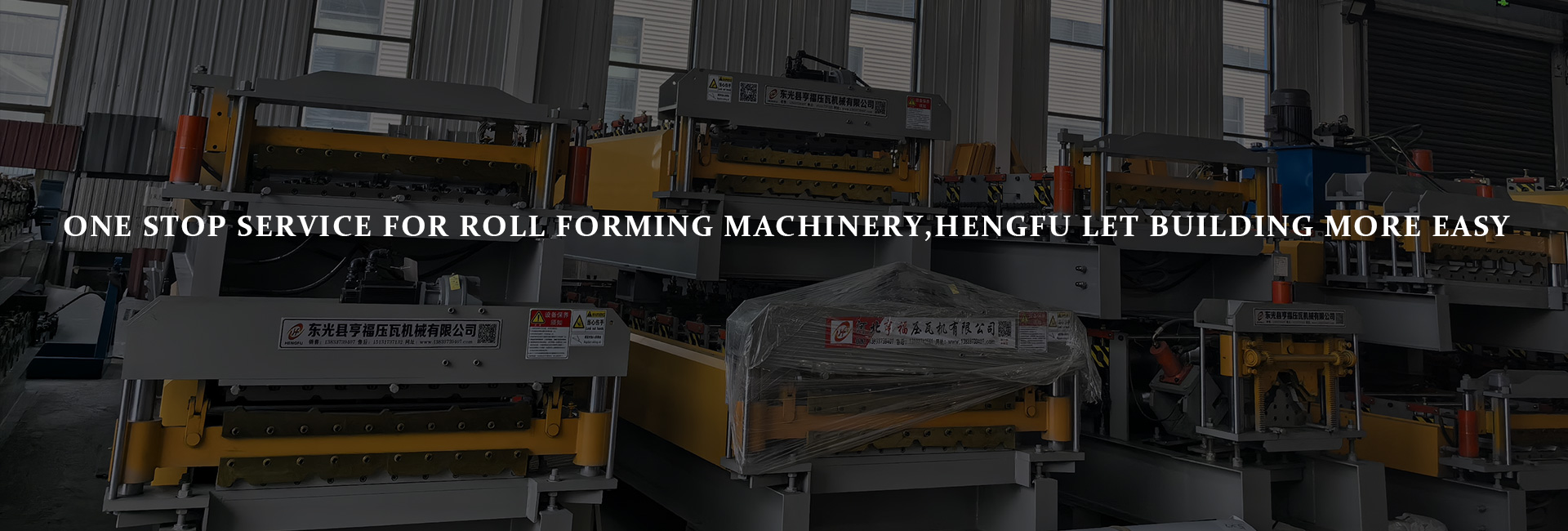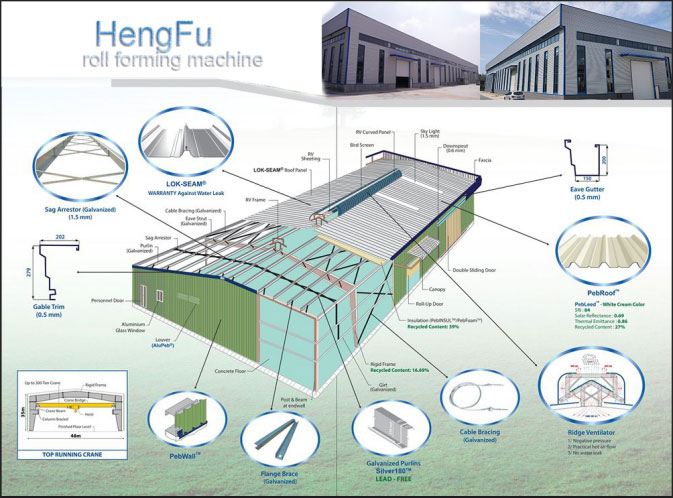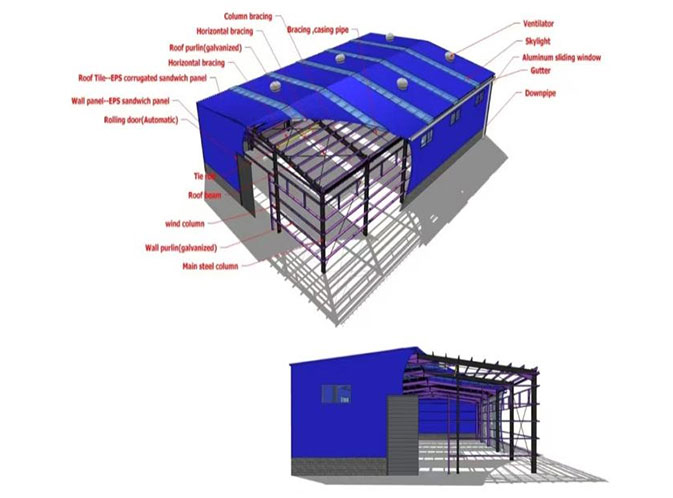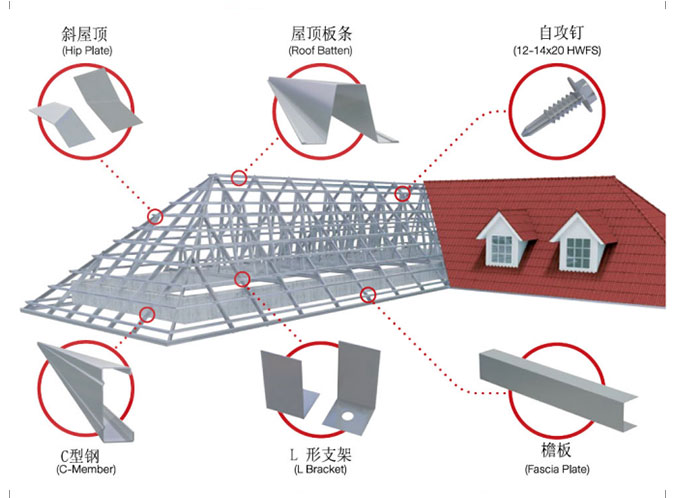Double - Layer Roll Forming Machine: Unveiling Its Fundamental Mysteries
writer:优化 release time:2025-07-06 04:58:59 Views:102frequency
In the dynamic and ever - evolving field of metal manufacturing, efficiency and versatility serve as powerful engines driving the industry forward. The double - layer roll forming machine, as a highly innovative breakthrough, has significantly enhanced the capabilities of metal production. Whether you are engaged in the metal processing industry or simply harbor curiosity about advanced manufacturing equipment, gaining an in - depth understanding of the basic knowledge of this machine is of paramount importance.
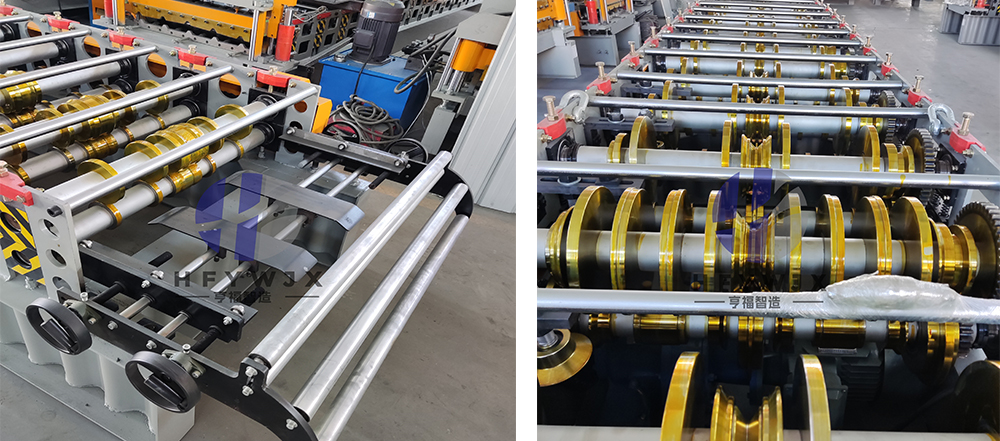
What Exactly Is a Double - Layer Roll Forming Machine?
A double - layer roll forming machine is a meticulously designed professional device with the remarkable ability to simultaneously shape two different metal profiles from either a single metal strip or two independent metal strips. This machine consists of two sets of mutually independent yet fully functional roll forming stations, one located above the other. Each set is equipped with a group of precisely machined rollers. As the metal strip passes through the machine, these rollers apply pressure in a specific sequence, gradually bending and shaping the originally flat metal sheets or coils into profiles with complex cross - sections with extremely high precision and consistency.
How Does It Work?
The Feed - in Stage
The entire manufacturing process commences with the feed - in of metal materials. If a single metal strip is used, it will enter the machine accurately through a central guiding system. This system ensures that the metal strip maintains perfect alignment when entering the upper and lower roll forming stations. When two independent metal strips are employed, each strip has its own dedicated feed - in mechanism, which can precisely guide the strip to the corresponding set of rollers.
The Roll Forming Phase
As the metal strip smoothly traverses the roll forming stations, the rollers apply pressure in a pre - determined order. Each set of rollers is uniquely designed to perform specific bending operations, gradually transforming the metal into the desired profile. The upper and lower stations start working simultaneously, enabling the production of two different profiles in a single pass through the machine. This parallel processing capability is the core advantage that sets the double - layer roll forming machine apart from traditional single - layer machines.
The Cutting and Discharge Process
Once the metal strip has passed through all the roll forming stations and reached the preset length, the cutting mechanism is activated immediately. Common cutting methods include flying shears or hydraulic cutters, which can quickly and accurately separate the formed profiles from the continuous metal strip. Subsequently, the formed profiles are automatically ejected from the machine, ready for subsequent processing or assembly operations.
What Are the Significant Advantages of Using a Double - Layer Roll Forming Machine?
A Substantial Increase in Production Efficiency
One of the most prominent advantages of the double - layer roll forming machine is that its production efficiency is twice that of a single - layer machine. By simultaneously forming two profiles, manufacturers can complete projects in a significantly shorter time, effectively shortening the delivery cycle and thus greatly enhancing overall productivity. This is of crucial importance for large - scale production tasks, as time is synonymous with efficiency and profitability.
A Noticeable Reduction in Costs
The improved production efficiency brought about by the double - layer roll forming machine translates into tangible cost savings for manufacturers. On one hand, the machine setup time is greatly reduced, lowering the time - related costs incurred during equipment debugging. On the other hand, the demand for labor is also correspondingly decreased, reducing labor costs. Additionally, the energy consumption per unit of output is lowered, making the production process more energy - efficient and environmentally friendly. More importantly, since two different profiles can be produced on a single machine, there is no need to purchase multiple single - layer machines, further reducing capital investment and the factory floor space required.
High Versatility and Flexibility
The double - layer roll forming machine boasts extremely high versatility. It can be flexibly configured according to different production requirements to produce various types of metal profiles, including channel steels, angle steels, Z - shaped steels, and custom - designed special shapes. The independent control function of the upper and lower roll forming stations allows operators to easily adjust the dimensions and shapes of the profiles, enabling rapid and efficient switching between different production tasks. This flexibility is extremely valuable in industries where product diversity and customization are common, such as the construction, automotive, and electrical industries.
A Significant Improvement in Product Quality
The double - layer roll forming machine adopts precise engineering design, ensuring consistent and high - quality product output. The advanced control system and high - precision rollers work in tandem to minimize dimensional deviations and surface defects, producing profiles that strictly comply with quality standards. This is of utmost importance in application fields where product performance and reliability are extremely demanding, such as the manufacturing of structural components and precision engineering parts.

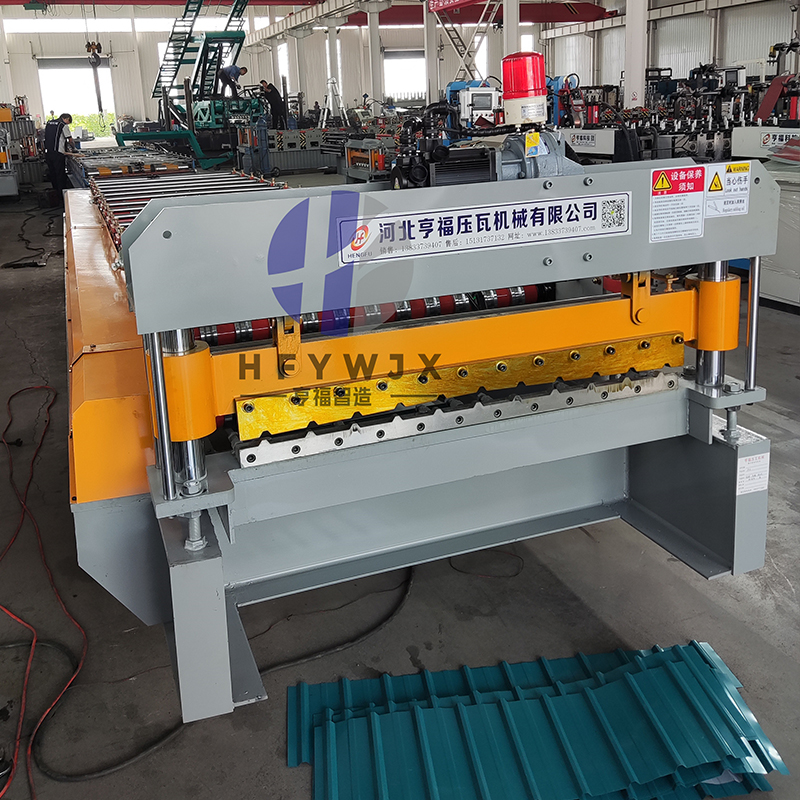
Examples of Practical Application Scenarios
Application in the Construction Industry
In the construction industry, the double - layer roll forming machine plays an indispensable role. It is widely used in the production of various metal profiles for building frameworks, roofs, and cladding systems. For example, it can simultaneously form C - shaped steels for structural support and corrugated sheets for roofs, greatly simplifying the production process and shortening the construction time of buildings.
Application in the Automotive Industry
The automotive industry has extremely high requirements for the quality and performance of metal profiles, and the double - layer roll forming machine has become an important production device in this field due to its excellent performance. It can manufacture lightweight yet high - strength metal profiles for vehicle frames, chassis components, and body panels. The machine's ability to produce complex shapes with high precision and consistency is crucial for meeting the strict safety and performance requirements of modern automobiles.
Application in the Electrical and Appliance Manufacturing Industry
When producing electrical and household appliances such as refrigerators, washing machines, and air conditioners, the double - layer roll forming machine is used to manufacture metal casings, shelves, and support structures. The machine's versatility allows manufacturers to produce profiles of various sizes and shapes according to the design requirements of different appliances, providing strong support for the diversified development of electrical and household appliances.
Academic References
Reference 1
A study published in Materials Science and Engineering: A explored the influence of microstructure on the mechanical behavior of metallic materials during forming processes. Although not specific to roll forming, the research provides valuable insights into material deformation behavior, which can inform the optimization of roll forming parameters and contribute to improved profile quality in double-layer roll forming machines.
Reference 2
Prior studies in the International Journal of Machine Tools and Manufacture have analyzed the dynamic behavior and vibration characteristics of roll forming equipment. By establishing mathematical models and conducting experimental validations, these works offer guidance for enhancing machine design, reducing operational vibrations, and improving forming accuracy and production stability.
Reference 3
Research published in the Journal of Manufacturing Science and Engineering has investigated friction and lubrication in metal forming processes. These findings help clarify the effects of lubrication conditions on forming force and surface finish, which are directly applicable to reducing tool wear and improving energy efficiency in double-layer roll forming applications.
Conclusion
The double - layer roll forming machine, as a powerful and highly versatile tool, has brought about a revolutionary change in the metal manufacturing industry. Its unique ability to simultaneously produce two different metal profiles offers numerous significant advantages in terms of production efficiency, cost - effectiveness, versatility, and product quality. With its wide application in various industries and continuous research and development to further enhance its performance, the double - layer roll forming machine is destined to play an increasingly important role in the future of metal manufacturing. Whether you are a manufacturer looking to upgrade your production facilities or an industry professional eager to learn about the latest technological advancements, gaining a deep understanding of the basic knowledge of this amazing machine is a crucial step towards success.


